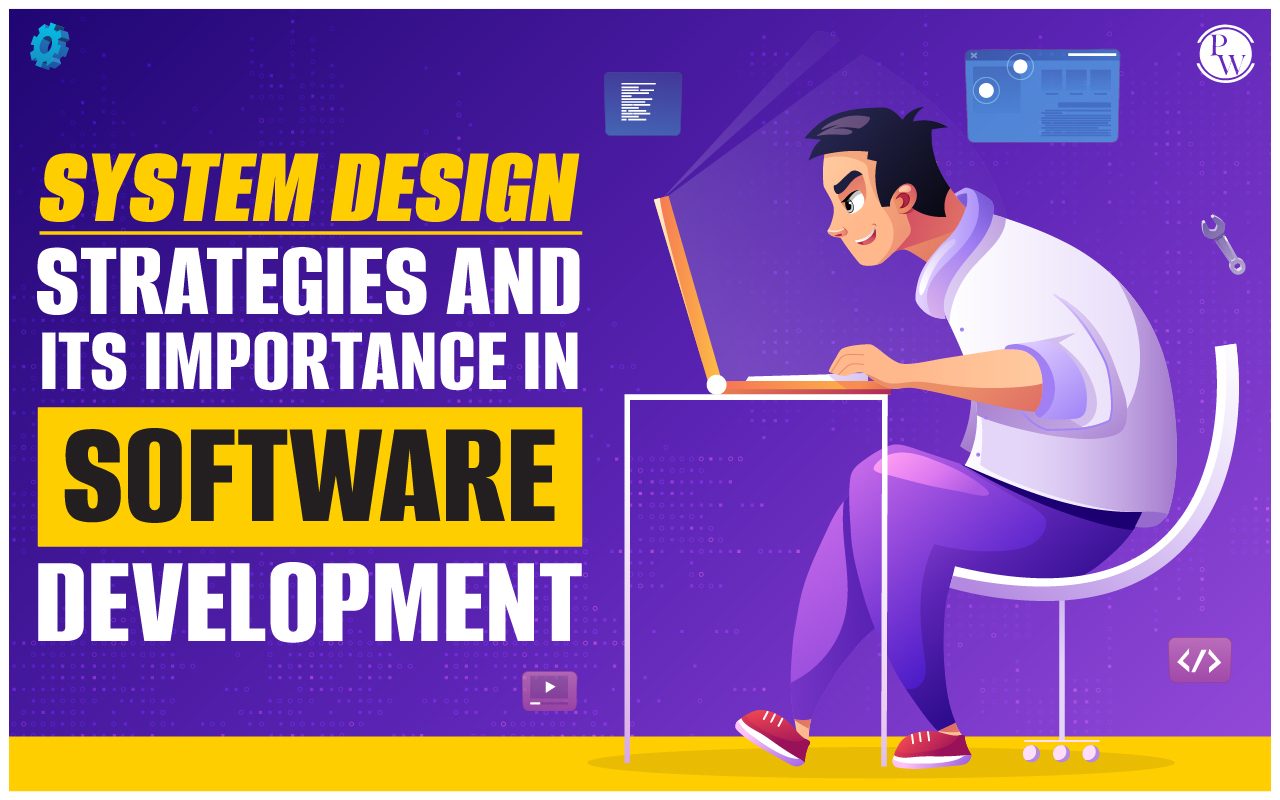System design is a crucial step in creating the architecture of a product. It involves designing interfaces, data structures, and modules that meet the system’s requirements. A well-thought-out system design strategy is vital for successful product development. It provides a roadmap to handle the complexity and scalability of the program effectively. Foresight and a deep understanding of the software product’s current and future needs are necessary to achieve this.
Software design is the process of turning software requirements into actual software execution. It involves understanding user needs and finding the best solutions to meet those needs. A strategy determines the most optimal design for implementing the required solution. This process follows a series of well-defined steps to conceptualize and plan the software design.
What is a Good System Design Strategy?
A crucial aspect of software development is to create a well-organized system design that facilitates easy development and adaptability. Structured design techniques play a significant role in managing the size and complexity of programs. Analysts provide guidelines to developers on how to write code and how different pieces of code should come together to form a cohesive program.
Software engineering encompasses the entire process of designing, building, testing, and maintaining software. The ultimate objective of software engineering is to develop reliable, efficient, and simple software. System design is important in this domain as it involves making critical decisions about the software system’s architecture, components, modules, interfaces, and data. A robust system design lays the foundation for a successful, high-quality software product.
Strategies for Software Design
Bottom-up Strategy:
In this approach, the system design starts with creating the smaller components and subsystems first. Building these lower-level elements makes constructing the higher-level subsystems and larger components easier and more efficient. This approach minimizes the time spent on troubleshooting and recon.
The process continues, combining the lower-level components into larger sets until the entire system becomes one single component. The advantage of this strategy is that it allows for the reusability of generic solutions and low-level implementations. However, it may lead to high levels of abstraction, making it challenging to create high-quality solutions tailored to specific problem structures.
Top-down Strategy:
With the top-down strategy, the focus is on dividing the entire system into subsystems and components first. Instead of starting from the bottom and building up, this approach conceptualizes the entire system and then breaks it into smaller subsystems. These subsystems are further divided into components that fulfill the requirements of the larger system.
The entire system is treated as a single entity, and subsystems are identified later based on their characteristics. This strategy results in clearly defined and non-abstract solutions. It is generally of high quality as it continuously defines subsystems and components to fit the system’s needs, making it efficient and effective. However, the solutions may not be generic and reusable, and the systems can have complex architectures that are harder to maintain.
Hybrid Design Strategies:
Hybrid design strategies combine the best aspects of both top-down and bottom-up methods. They incorporate the efficiency and organization of the top-down approach with the reusability and well-structured nature of the bottom-up strategy. As a result, hybrid strategies offer a balanced and effective system design approach that suits most systems.
Structured Design:
Structured design is all about organizing solutions to problems well-structured and organized. It focuses on creating a clear and comprehensive solution design. One of the biggest advantages of structured design is that it provides a better understanding of how the problem is being solved. It allows designers to concentrate more accurately on the problem at hand.
A well-structured design follows specific rules for communication between different modules, such as cohesion and coupling. Cohesion refers to grouping functionally related elements together, while coupling involves the communication between various modules. A well-structured design aims for high cohesion and low coupling, making it efficient and effective.
Function-Oriented Design:
Function-oriented design is a classical approach to software design that centers around identifying major software functions and then elaborating and refining them top-down. This method divides the system into smaller sub-systems known as functions, each capable of performing significant tasks.
The overall system is considered a top-level view of all these functions. Function-oriented design inherits some qualities and principles from Structured Design, which utilizes the divide-and-conquer methodology. This type of design is particularly suitable when the system state is not critical, and the program or function operates based on input rather than state.
Recommended Course
- Decode DSA with C++
- Full Stack Data Science Pro Course
- Java For Cloud Course
- Full Stack Web Development Course
- Data Analytics Course
Frequently Asked Questions
Q1. What is the significance of system design in software development?
Ans. System design is crucial in software development as it helps engineers identify and resolve potential issues before they become expensive, improving overall system performance.
Q2. Can you tell me about the five key design strategies?
Ans. Assessing the entire project and establishing measurable goals is essential. Next, identify your competitive edge and determine where your objectives place you in the market. Set clear and measurable goals for your project. Once implemented, evaluate the outcomes and make necessary adjustments over time.
Q3. What are the various design strategies available?
Ans. Some strategies are stretching, folding without stretching (to be released soon), freeform modeling, grid structures, sectioning, and subtraction.
Q4. What are software development strategies, and how to create an effective one?
Ans. The software must deliver good business results, the team building the software must be efficient, and the progress of the business project must be tracked daily.
Q5. What are the three design strategies?
Ans. The three design strategies are:
- Structured Design
- Function-Oriented Design
- Object-Oriented Design.
Recommended Reads
Data Science Interview Questions and Answers
Data Science Internship Programs




